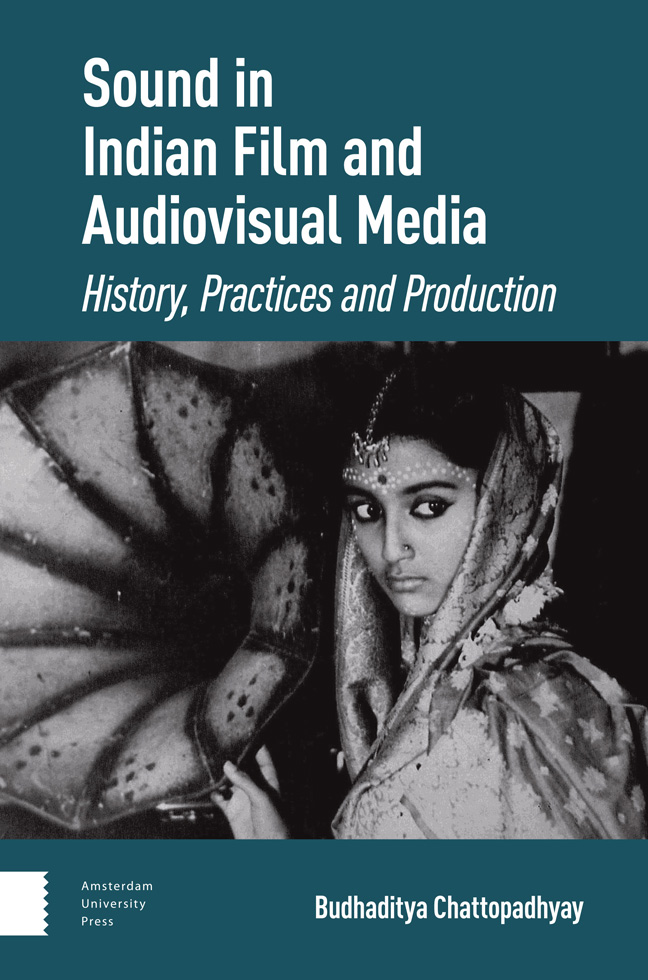Book contents
- Frontmatter
- Contents
- Acknowledgements
- 1 Introduction
- 2 The Technological Frameworks
- 3 Direct Sound and Early Talkies
- 4 Sound of the Golden Age
- 5 Tracing the Sound in Satyajit Ray’s Film-works
- 6 Popular Films from the Dubbing Era
- 7 Parallel Sounds, Radical Listening – Part I
- 8 Sholay, Stereo Sound and the Auditory Spectacle
- 9 The Advent of Digital Sync Sound
- 10 The Surround Revolution
- 11 Sound in the Audiovisual Media Arts
- 12 Parallel Sounds, Radical Listening – Part II
- 13 A Concluding Voiceover
- Bibliography
- Filmography
- Index
3 - Direct Sound and Early Talkies
Published online by Cambridge University Press: 20 February 2024
- Frontmatter
- Contents
- Acknowledgements
- 1 Introduction
- 2 The Technological Frameworks
- 3 Direct Sound and Early Talkies
- 4 Sound of the Golden Age
- 5 Tracing the Sound in Satyajit Ray’s Film-works
- 6 Popular Films from the Dubbing Era
- 7 Parallel Sounds, Radical Listening – Part I
- 8 Sholay, Stereo Sound and the Auditory Spectacle
- 9 The Advent of Digital Sync Sound
- 10 The Surround Revolution
- 11 Sound in the Audiovisual Media Arts
- 12 Parallel Sounds, Radical Listening – Part II
- 13 A Concluding Voiceover
- Bibliography
- Filmography
- Index
Summary
Abstract: Chapter 3 traces the various modes and facets of sound production in Indian cinema during the early talkies utilizing what is often termed ‘direct sound’. It delineates the advent of sound in Indian cinema and the ensuing transition from the silent era to sound films, analysing how the complex evolution of sound changed methods of storytelling and narration. Starting with the use of sound in early Indian talkies such as by the Bombay Talkies studio (1934–53), the chapter elaborately describes the development of direct sound and the resultant linguistic divisions in Indian cinema, using several monaural films as example. Focus is placed on determining monoaural aesthetics, and audio-visual and audio-audio relationships.
Keywords: Indian cinema, sound studies, early talkies, direct sound, optical recording
The Sonic Leakage
Throughout the trajectory of monaural sound practice in Indian cinema since 1931, available recording techniques and equipment have had a somewhat limited dynamic sound recording and production range, leading to voice and dialogue being at the top of the priority list, as previously discussed. Likewise, the freedom of a microphone in outdoor locations or on a film set had been reduced by controlling its directionality, to focus on recording ‘almost always the voice’ (Chion, 1994, p. 5), thus establishing a sound-cinema that was of an essentially vococentric nature. It is no surprise then, that the films produced in these times were mostly devotional song and musicoriented mythical or religious stories where the primary narration was carried out through either dialogue between characters or post-recorded voiceovers in some cases. Despite the limitation of the dynamic range, and the controlling and suppression of other sounds such as ambient and incidental sounds, some louder locational environmental sounds may have unwantedly intruded into the film’s directly recorded soundtrack. The predominant emphasis had been on the voice of the actors, but these stray and fundamentally unwanted sounds could provide spatial information about the real site that the film was shot in. In a well-known sequence from the legendary Indian film Devdas (Barua, 1935/1936), the eponymous protagonist Devdas is languishing over his initial arrival at a brothel in Calcutta (now Kolkata) following his recent breakup with Paro, a childhood sweetheart from his native village. Devdas’ fateful interaction with the ‘prostitute’ Chandra leaves him in a state of perpetual melancholia, claustrophobia, and remorse from which he can never recover.
- Type
- Chapter
- Information
- Sound in Indian Film and Audiovisual MediaHistory, Practices and Production, pp. 69 - 82Publisher: Amsterdam University PressPrint publication year: 2023



